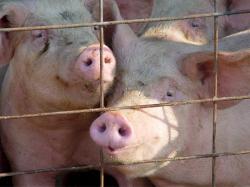Hogs Drop As High Wholesale Pork May Cut Demand; Cattle Steady
May 14, 2010 | 1 min to read

Hogs fell for the second time in three sessions on speculation that the highest U.S. wholesale- pork prices in 21 months will slow grocers’ purchases. Cattle were little changed.
Yesterday, wholesale pork climbed to 91.3 cents a pound, the highest since August 2008, U.S. Department of Agriculture data show. Retailers may cut back on meat buying as they finish filling orders before the Memorial Day weekend at the end of May, a holiday when many U.S. consumers grill outdoors, said Don Roose, the president of U.S. Commodities Inc.
“It appears that maybe we’ll slow down domestic demand after Memorial Day, with prices sitting at these lofty levels,” Roose said from West Des Moines, Iowa.
To read the rest of this story please go to: Bloomberg
